I’m exactly halfway through a fitness and exercise program I started six weeks ago and figured I’d share some halftime commentary that might be helpful to others considering undertaking such a program.
It’s a virtuous cycle if you can start it
First, this does work. I’ve seen a noticeable strength improvement but more importantly I’ve experienced a significant increase in energy. Before starting I would find myself hitting a wall of lethargy about 3pm and feeling sluggish in the evenings after work. The change in diet and exercise has resulted in better energy during the day and consequently better sleep at night (which improves the daytime effectiveness). The improvements didn’t fully kick in until about the third week so it’s a delayed effect but if you can get through that first bit it becomes much easier to stick with it. I can see how the initial hit in extra work without the energy benefits cause people to bail on the program. But I have a trick to propose for overcoming that New York New York threshold…
Commit publicly
The same factors that make the idea of the Open Source Goals meme effective can be put to work for you in this situation. When you decide to commence a program like this, I would recommend going “all-in” and making a public declaration some place where you know people will see it and hold you to it. It could be as simple as a status update on your facebook or a post on your blog but whatever it is, go public with it. I took one of those dorky before pictures when I started (you know the ones where you hold up a magazine in the mirror so it proves what you looked like when you started). I’ll post the before/after pics here when I finish. I don’t even know how many people will see those pics but just the thought of having to do that has motivated me more than once to power through at 6am and make my way into the gym.
iPhone fitness programs can’t match paper
I had done a moderate bit of research to find the most popular iPhone app for tracking workouts. I ended up purchasing one called “.” Unfortunately after trying to use it I quickly concluded that no matter how much they improve the UI on these apps it’s still too much friction to enter the data during a workout. Nothing compares to a paper booklet divided according to how you plan your workouts (and a “combed” binder works best because it’s perfect for holding your pen). You need to be able to quickly jot down numbers and flip back to see what you did the week before. The iPhone interface while beautiful for graphing progress over time is not appropriate for quick data entry while in the gym. You’d be better off doing your booklet and then sending it to India for someone to transcribe it into a google doc or database so you can run reports on it.
BFL is geared towards fat loss
I’ve noticed that this particular program seems to be biased towards people losing weight. While that’s probably the typical use case I’m 70% interested in muscle growth and only 30% interested in fat loss. Accordingly I’ve tweaked the program to fit that goal. The typical workout consists of alternating between cardio and weight training so you’d do upper body, run, lower body, run, upper body, etc… and then reverse it the next week. I’ve found that it’s impossible on the upper body workout day to do adequate justice in an hour so I’ve taken to pulling out a muscle group from that day and throwing it in on an adjoining run day and focusing heavily on it. So for instance I’ll yank triceps from the upper body day and the next day I’ll run and devote 4 exercises to tris. I’ve found this works great (especially given that the cardio only takes 20min so there’s plenty of time left over).
Make a 20min power mix
I’ve not yet done it but I came up with an idea I believe will be very useful. The cardio workouts are supposed to be kept short (20min) and adhere to a pattern of hitting four “high points” during that time. So typically you’d start out with a jog that builds to a full sprint by minute five and then back off to a jog. Repeat that cycle four times and you’re done. The problem is unless you only ever run on the treadmill where you have a LED readout in your face telling you where you stand time-wise, you’ll find yourself constantly glancing at a stop watch trying to keep to the schedule. An obvious solution here would be to create a song mix with audible cues on when to change intensity. I came up with the idea to make a custom 20min song in Garageband that had adrenaline-type music with signals embedded at each switching point. There’s also a guy locally here in Phoenix who developed something called Prime Condition which is an advanced, online version of this concept and worth looking at.
The one good iPhone fitness app
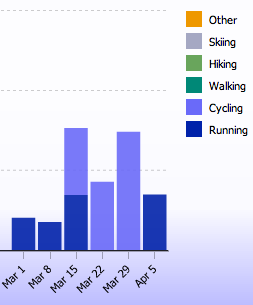 So having said that all iPhone fitness apps for weight training are bunk, I will say there’s a really useful one for running outdoors. I’ve been using Runkeeper now for a few months and it rocks. I’ve found their free version to be exactly what I need. I can launch my iPod music in the background before a run and then fire up this app and have it track everything automatically. It records the route over time and produces a historical record of the run with a map and speed indicators at one-minute intervals. They’ve done an amazing job with this app. It can track other activities as well like hiking and cycling and it sends them automatically to your web account so you can get in-depth analysis of the activity. If you’re doing any amount of running and have an iPhone definitely check this one out.
So having said that all iPhone fitness apps for weight training are bunk, I will say there’s a really useful one for running outdoors. I’ve been using Runkeeper now for a few months and it rocks. I’ve found their free version to be exactly what I need. I can launch my iPod music in the background before a run and then fire up this app and have it track everything automatically. It records the route over time and produces a historical record of the run with a map and speed indicators at one-minute intervals. They’ve done an amazing job with this app. It can track other activities as well like hiking and cycling and it sends them automatically to your web account so you can get in-depth analysis of the activity. If you’re doing any amount of running and have an iPhone definitely check this one out.
Foods I never thought I’d eat
I’ve experienced first-hand that when you start eating high-protein foods and exert a lot of energy regularly, you come to have some weird cravings. I’ll share my average shopping list once I get it into a google doc but I’ve found myself making a hard-boiled egg / tuna / cottage cheese / dijon mustard concoction and while it sounds gross it tastes delicious when your body craves protein. The verdict is still out on whether beef jerky is a healthy snack but I’ve discovered all kinds of high-protein snacks like edamame, sardines, cottage cheese and protein bars that are totally edible and even tasty. The flash-frozen fish cutlets at Costco are _awesome_ – I’ll grill them up with teriyaki and lemon pepper and it’s better than stuff I get at most restaurants. I’ve found a little squeezed lemon to be a perfect substitute for butter in almost every scenario. And I now look forward to my frozen strawberry & banana protein shakes in the morning. Bottomline: do not fear the protein crazy foods – they’re actually really good once you get used to them.
Anyways, those are just some thoughts here at the halfway mark. I’ll post those embarrassing before/after pics when I finish. If you are engaged in any kind of fitness program, what useful or surprising lessons have you learned that you can share?

 They say “you can’t improve what you can’t measure.” March is the month I dive into a two-pronged Blitzkrieg assault to put metrics in place for tracking and improving health and wealth. I’ve spent the past couple days working on two projects, namely:
They say “you can’t improve what you can’t measure.” March is the month I dive into a two-pronged Blitzkrieg assault to put metrics in place for tracking and improving health and wealth. I’ve spent the past couple days working on two projects, namely: 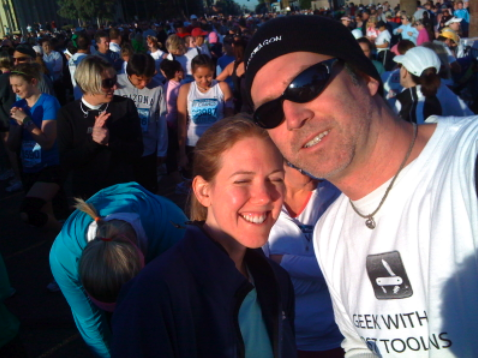
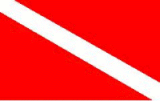 The bubbles cascading past your mask at that depth sound like glass beads clinking together. My friend and I just got back from San Carlos Mexico where we just completed our open water scuba certifications. I posted
The bubbles cascading past your mask at that depth sound like glass beads clinking together. My friend and I just got back from San Carlos Mexico where we just completed our open water scuba certifications. I posted 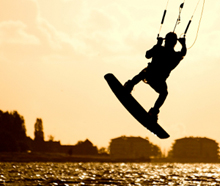 For those unfamiliar with what kite surfing is, it’s a water sport that meshes wake boarding with the art of flying an over-sized kite and using the wind to generate the power that a motorboat would normally provide. Also known as “kite boarding,” this sport is the fastest growing water sport in the world right now. A skilled kite surfer can navigate upwind tacking like a sailboat and launch several stories into the air by timing a jump off of a large wave. I had the opportunity to
For those unfamiliar with what kite surfing is, it’s a water sport that meshes wake boarding with the art of flying an over-sized kite and using the wind to generate the power that a motorboat would normally provide. Also known as “kite boarding,” this sport is the fastest growing water sport in the world right now. A skilled kite surfer can navigate upwind tacking like a sailboat and launch several stories into the air by timing a jump off of a large wave. I had the opportunity to 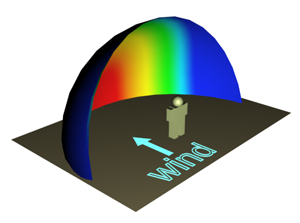 There is a useful mental abstraction in kite surfing called the “wind window.” The wind window is an imaginary quarter sphere that extends around you and occupies your peripheral vision as you are standing with your back to the wind looking straight ahead (like a big orange slice downwind from you if you are one of the seeds). This is the space in which your kite will fly when its tethered to you. Now imagine a colored gradient superimposed against this quarter sphere where the red zone is that spot directly downwind and the concentric zones of the sphere that radiate outward from there to the edge of your peripheral vision are gradually cooler colors. Weird I know, but if you’re visualizing it you should have something like the picture on the right.
There is a useful mental abstraction in kite surfing called the “wind window.” The wind window is an imaginary quarter sphere that extends around you and occupies your peripheral vision as you are standing with your back to the wind looking straight ahead (like a big orange slice downwind from you if you are one of the seeds). This is the space in which your kite will fly when its tethered to you. Now imagine a colored gradient superimposed against this quarter sphere where the red zone is that spot directly downwind and the concentric zones of the sphere that radiate outward from there to the edge of your peripheral vision are gradually cooler colors. Weird I know, but if you’re visualizing it you should have something like the picture on the right. The takeaway here is that, much like with a startup, there are a thousand different things you could do at any moment to improve your situation, but with limited resources it’s all about determining where that power band is at all times. Some startups have blown millions optimizing kite skills with their kites around on the periphery while others have succeeded on shoestring budgets with a small, crappy kite and minimal kite mastery but by keeping their kite in the red zone. At least 50% of this game is identifying the power band.
The takeaway here is that, much like with a startup, there are a thousand different things you could do at any moment to improve your situation, but with limited resources it’s all about determining where that power band is at all times. Some startups have blown millions optimizing kite skills with their kites around on the periphery while others have succeeded on shoestring budgets with a small, crappy kite and minimal kite mastery but by keeping their kite in the red zone. At least 50% of this game is identifying the power band.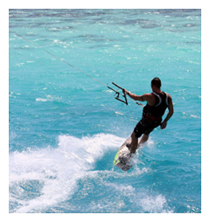 The holy grail of a wind sport is to go upwind. Any jokester with a sailboat can raise full sails and go wherever the wind takes him/her. It takes true skill to know how to tack and travel against the wind – but once you can do that you can go anywhere. In the same way, anyone with deep pockets can start a company, throw up the sail and go downwind. Bootstrapping with minimal resources means you have to learn to travel upwind.
The holy grail of a wind sport is to go upwind. Any jokester with a sailboat can raise full sails and go wherever the wind takes him/her. It takes true skill to know how to tack and travel against the wind – but once you can do that you can go anywhere. In the same way, anyone with deep pockets can start a company, throw up the sail and go downwind. Bootstrapping with minimal resources means you have to learn to travel upwind.




